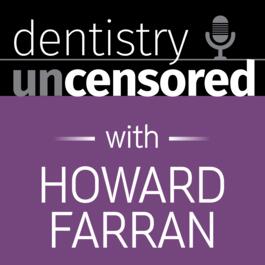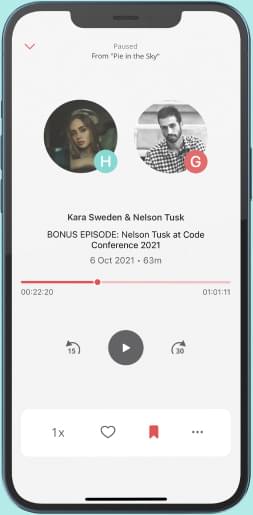
Why Can’t I Get This Tooth Numb? Real-World Tips for Anesthetizing Hot Lower Molars
Every dentist has faced it: the mandibular molar with a raging pulp that shrugs off your best IAN block like it was tap water. The lip’s numb, your patient swears they’re not, and now you’re both sweating through the bib. This wasn’t just one Townie’s bad day, it was the spark for one of the deepest, funniest, and most practical threads on Dentaltown in years. A global brain trust weighed in, debating anesthetic brands, injection techniques, pain management strategies, and just how much articaine is too much. What emerged wasn’t a magic bullet, but a clear playbook for how to handle the dreaded “hot tooth” with skill, humility, and a few dirty tricks. The Classic Scenario It usually starts with #18 or #19, irreversible pulpitis, and a patient in pain. You give a textbook IANB, maybe even follow up with a buccal infiltration. But the second you pick up your handpiece or touch cold to enamel, they jump. You’ve blocked the lip, the tongue, the soul, but not the pulp. Now what? Technique or Tooth? Most Townies agree: when a patient doesn’t go numb, don’t rush to blame the anesthetic. It’s usually technique. Articaine blocks? They’re fine if you’re hitting bone and working fast (onset in The advice: don’t stack carpules blindly. Instead, change the strategy. If you’ve blocked with lidocaine, try carbocaine. If that fails, it’s time to break out the big guns. Gow-Gates: The No-Gadget Upgrade Gow-Gates was the most frequently recommended “next step” before fancy gear. It’s free, reliable, and profoundly effective when done right. Wait five minutes after the injection, ask patients to move their jaw around while it sets, and you’ll often get the profound anesthesia you were chasing. Still not numb? Then it’s time to get creative. Intraosseous, Intrapulpal, and PDL—Oh My You don’t need an X-tip or Stabident to go intraosseous. Many Townies use a short, extra-sharp needle to sneak through the bone in areas where the crestal lamina dura is missing. A buccal infiltration with pressure against the cortical plate (especially in furcations) can work like magic. If all else fails, and you’re into the pulp chamber, even slightly, hit it with an intrapulpal. Yes, it hurts. But it ends fast, and it works. Pro tip: when intrapulpal is inevitable, warn the patient gently: “This may sting for just a second, but then it’ll feel like magic.” No one opts to go home. The Lingual Trick You’ve Probably Never Tried Several veteran clinicians described a simple but overlooked maneuver: a subperiosteal lingual infiltration at the apex of the tooth, especially second or third molars. Why? Because anatomical dissections (and some animal skulls in backyards) show a surprising number of accessory foramina on the lingual side. Sometimes that’s where the nerve supply is hiding. The Case for Articaine Despite decades-old fears about paresthesia, most dentists in the thread now use 4% articaine routinely, including for blocks. The speed and depth of anesthesia, especially in hot pulps, is hard to match. Some protocols combine citanest plain to start (less sting), followed by lidocaine, then articaine to finish the job. And yet, some Townies avoid articaine for blocks entirely, sticking to lidocaine or mepivacaine, especially in kids or patients with paresthesia history. Ultimately, it’s a matter of preference, experience, and risk tolerance. Buffering: The Quiet Revolution BufferPro by Premier Dental got a few nods. The promise? Raising the pH of your anesthetic solution to speed onset and improve efficacy. Simple, cheap, and available. Townies using it swore it shortened the guesswork and the wait. Pharmacologic Prep Ibuprofen 600–800 mg taken 1 hour pre-op showed strong support. It doesn’t just manage post-op discomfort, it reduces inflammation, improves anesthetic success, and helps you get ahead of the pain curve. A few docs also mix analgesics in recovery: Tylenol 1000 + Ibuprofen 600 is a go-to combo. The Antibiotic Debate Here, it got heated. Some dentists prescribe antibiotics pre-op to reduce inflammation and improve anesthetic success. Others called that malpractice, citing ADA guidelines and resistance risks. The consensus? Only consider antibiotics if there’s systemic involvement or swelling. Otherwise, it’s NSAIDs, definitive treatment, or reappointment. The Mental Game When nothing works, it’s not just the pulp that’s inflamed, it’s your stress level. Several Townies described having a set protocol to reduce emotional strain: block, infiltrate, try again, then reappoint or refer. Telling the patient up front, “If this doesn’t numb, we’ll try again later,” can preserve your sanity and their trust. Final Pearls Don’t stack the same anesthetic. Change agents. Try carbocaine. Don’t wait too long, most anesthetics peak at 5–10 minutes. Infiltrate attached gingiva, not movable mucosa, for stronger effect. If your lip is numb but tooth isn’t, think accessory innervation (mylohyoid, lingual, etc.). Sedation? Not always an option. Master local first. Bottom Line Hot molars will humble even the most seasoned dentist. But with the right playbook, Gow-Gates, lingual infiltrations, buffered agents, and a willingness to think anatomically, you can win the numbness battle more often than not. Because the only thing worse than a hot tooth… is a hot tooth with a numb lip and a wide-eyed patient asking, “Are you sure I’m numb?” Thanks to the entire Dentaltown community for turning a clinical headache into a masterclass on anesthesia, and for keeping it real. Follow the discussion at https://www.dentaltown.com/messageboard/thread.aspx?s=2&f=93&t=391919&g=1&st=Why%20can%27t%20I%20get%20this%20tooth%20numb?
From "Dentistry Uncensored with Howard Farran"


Comments
Add comment Feedback